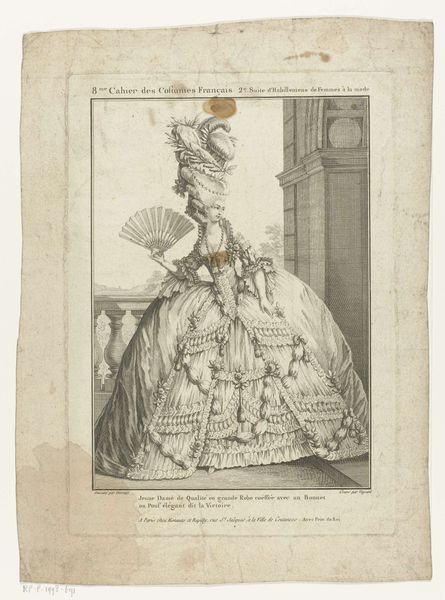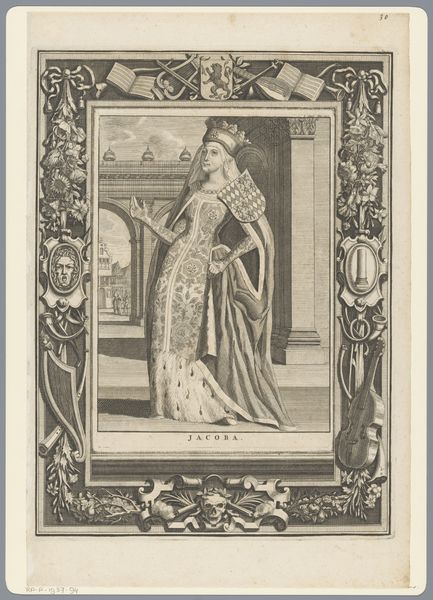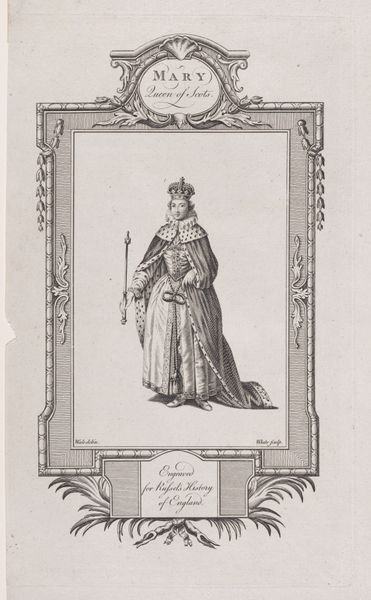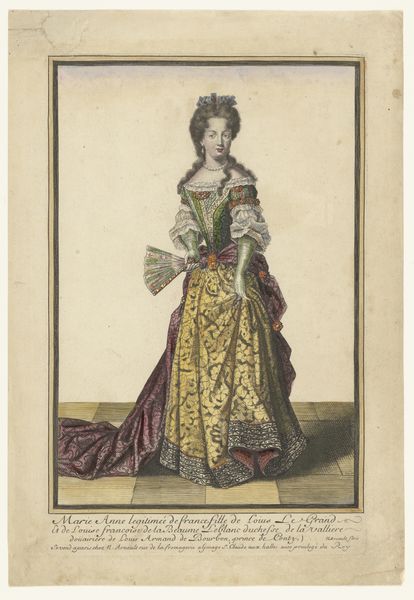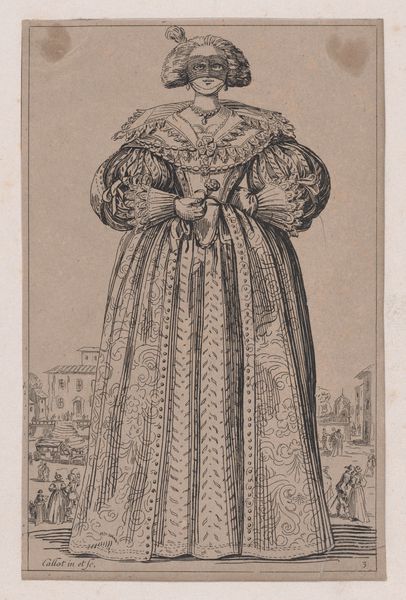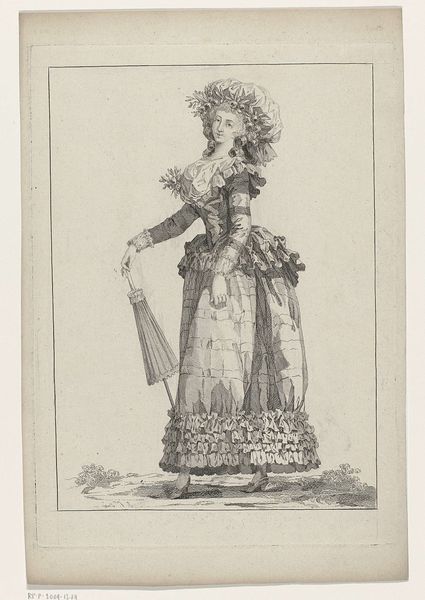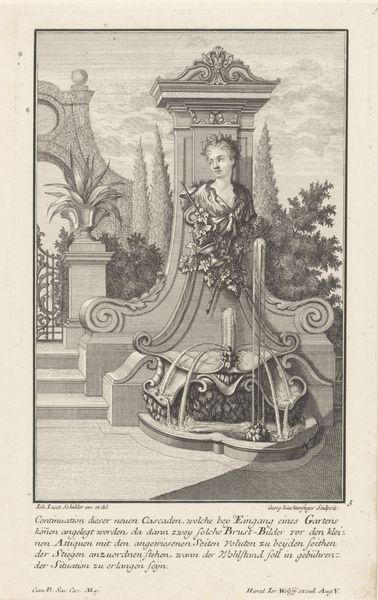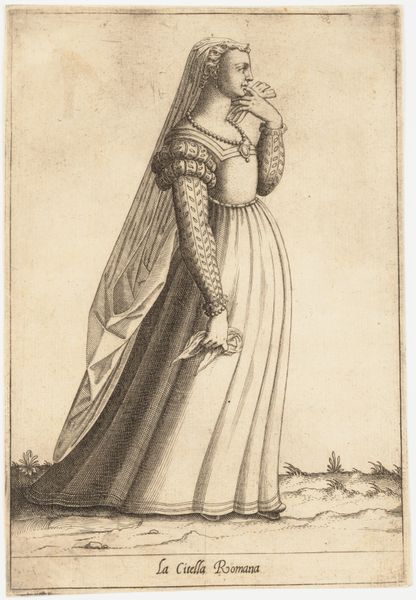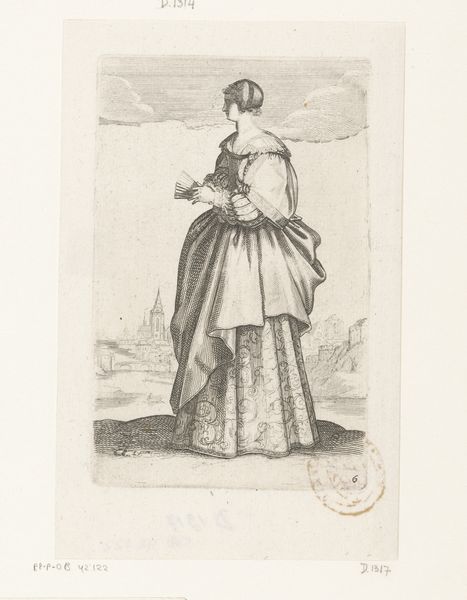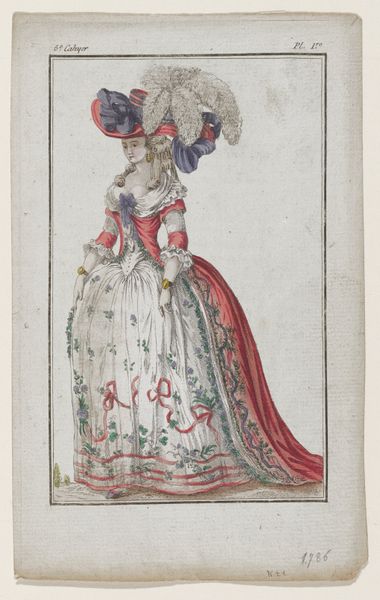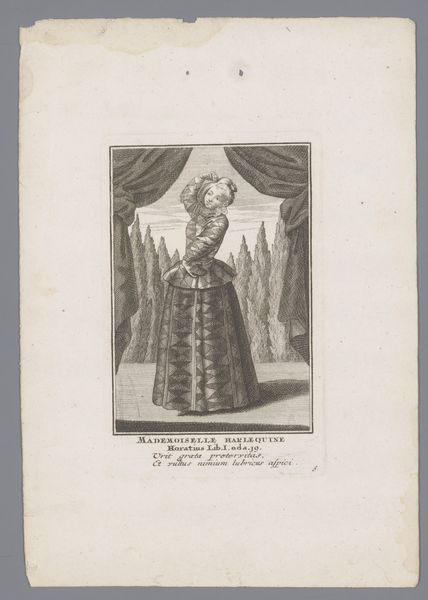
Mary, Queen of Scots in the Dress of 1570 1771 - 1835
0:00
0:00
drawing, print, paper, engraving
#
drawing
# print
#
paper
#
history-painting
#
academic-art
#
engraving
Dimensions: Sheet: 5 1/4 × 3 5/16 in. (13.3 × 8.4 cm)
Copyright: Public Domain
Editor: So this is Joseph Collyer’s “Mary, Queen of Scots in the Dress of 1570,” dating from 1771 to 1835. It’s a print, an engraving on paper, housed here at the Met. It has a stark formality, almost like a paper doll. What can you tell me about it? Curator: Look at the precise detail achieved through the engraving process. The labor involved in creating those fine lines to mimic the folds and ornamentation of her dress! It’s fascinating how a print, typically associated with mass production, attempts to capture the luxury and exclusivity implied by royal garments. Editor: It is really meticulous. Do you think there’s something to be said about translating a painting of the Queen of Scots into this medium? It feels very different from portraiture. Curator: Absolutely. Consider the materials and their social context. Oil paint signified wealth and permanence. Here, we have a relatively accessible medium like engraving. Does the act of reproducing and distributing her image democratize or diminish her power? And what about the "dress of 1570" itself? Was it a marker of identity, power, or perhaps, even resistance during her life? This print reproduces an earlier painting; we are several steps removed from the physical making of that dress in 1570. Editor: I see what you mean. It shifts the focus. Is it less about Mary as an individual and more about this moment in history reinterpreted through art? Curator: Precisely. We also need to consider how this print functions within its own time. Who was buying these prints, and what did Mary, Queen of Scots represent to them? This print flattens her three-dimensionality, both physically and symbolically. Is the original dress of 1570 really the subject of this artwork, or is it something else? Editor: This really sheds a new light on the work, focusing on process and distribution rather than just the historical figure. Curator: Yes! Considering these aspects really shifts our understanding of not just this work, but art in general.
Comments
No comments
Be the first to comment and join the conversation on the ultimate creative platform.


